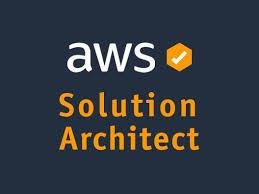As the demand for cloud professionals continues to surge across industries, earning an aws certification has become one of the most effective ways to validate your skills and advance your career. Amazon Web Services (AWS) offers a robust certification program that caters to professionals at various experience levels, from beginners to seasoned architects and developers.
However, like any professional exam, AWS certifications require a solid understanding of the subject matter, familiarity with the exam format, and strategic preparation. If you’re aiming to pass an AWS certification exam on your first attempt, this comprehensive guide will walk you through everything you need to know—from the exam format and duration to proven strategies for success.
Understanding AWS Certification Exams
Why AWS Certification?
aws certified cloud practitioner demonstrate your technical skills and knowledge of the AWS cloud platform. Employers view these credentials as reliable proof that you’re capable of designing, deploying, and managing cloud-based solutions using best practices.
Whether you’re starting a cloud career or upgrading your skills for a new role, AWS certifications can:
- Help you stand out to employers
- Increase your salary potential
- Provide structured learning goals
- Boost your confidence in cloud-based roles
The Certification Levels
There are four levels of AWS certifications, each designed for different stages of your cloud career:
- Foundational – For those new to the cloud
- Associate – For individuals with some hands-on experience
- Professional – For advanced cloud professionals
- Specialty – For experts in niche domains like security, data analytics, and networking
Exam Format: What to Expect
Each AWS certification exam follows a specific structure, but they share common characteristics. Here’s what you need to know:
1. Question Types
AWS exams use a combination of the following formats:
- Multiple Choice: One correct answer and three incorrect responses (distractors)
- Multiple Response: Two or more correct answers from a list of options
- Scenario-Based Questions: You’re given a real-world use case, and you must choose the best solution
These questions are designed not just to test your memory but to assess your ability to apply concepts in real-world scenarios.
2. Number of Questions
The number of questions varies depending on the exam level:
- Foundational (Cloud Practitioner): 65 questions
- Associate Level Exams: 65 questions
- Professional and Specialty Exams: 75 questions
3. Time Limit
You’ll have a set amount of time to complete the exam:
- Foundational: 90 minutes
- Associate: 130 minutes
- Professional and Specialty: 180 minutes
Time management is essential. With roughly 1–2 minutes per question, pacing is key to success.
4. Passing Score
AWS does not publish exact passing scores, but most exams require around 70% to pass. Scores range from 100 to 1,000, and a passing score is typically around 720. However, the exact cut score can vary.
5. Exam Delivery
Exams can be taken:
- Online (proctored via webcam and microphone)
- At a Testing Center (on-site location with monitored exam rooms)
The exam format is the same for both options.
How to Pass on the First Try: Step-by-Step Strategy
Passing an AWS exam on your first attempt requires more than just casual study. Follow these steps to improve your chances of success.
Step 1: Choose the Right Certification for Your Goals
Your journey starts by choosing the right exam. If you’re a beginner, the AWS Certified Cloud Practitioner is the ideal starting point. For those with some hands-on AWS experience, one of the Associate-level exams is a solid next step.
Match the certification to your career goals:
- Solutions Architect: Focus on designing cloud solutions
- Developer: Focus on application development in AWS
- SysOps Admin: Focus on managing systems and deployments
- DevOps: Focus on CI/CD pipelines, automation, and infrastructure as code
Knowing what role you’re aiming for will help you select the exam that provides the most value.
Step 2: Understand the Exam Blueprint
Each AWS exam has a defined exam guide or blueprint that outlines the key domains and their weightings.
For example, the Solutions Architect Associate exam includes:
- Design Resilient Architectures – 30%
- Design High-Performing Architectures – 28%
- Design Secure Applications and Architectures – 24%
- Design Cost-Optimized Architectures – 18%
These domains indicate the relative importance of each topic, allowing you to allocate your study time effectively.
Step 3: Study Smart, Not Just Hard
Time spent studying is important, but how you study is even more critical. Here’s how to maximize your effectiveness:
Focus on Core Services
Concentrate on understanding key AWS services such as:
- Compute: EC2, Lambda, Auto Scaling
- Storage: S3, EBS, Glacier
- Database: RDS, DynamoDB
- Networking: VPC, Route 53, ELB
- Security: IAM, KMS, CloudTrail
- Monitoring: CloudWatch, CloudFormation, Config
Use Real-World Scenarios
AWS questions often involve selecting the best solution, not just a correct one. Think like a cloud architect—consider cost, performance, and security trade-offs.
Apply the Knowledge Practically
Nothing beats hands-on experience. Use the AWS Free Tier to:
- Launch EC2 instances
- Create and manage IAM roles
- Set up S3 buckets and permissions
- Configure VPCs and subnets
- Practice creating Lambda functions
Practical experience helps you understand how services interact and prepares you for scenario-based questions.
Step 4: Practice Exams and Time Management
One of the best ways to prepare for the exam is to simulate the real test environment.
Practice Exams Help You:
- Get used to the question style
- Improve time management
- Identify weak areas
- Build exam-day confidence
When taking practice exams:
- Time yourself strictly
- Review each incorrect answer to understand the mistake
- Track your progress over time
Aim for consistent scores above 80% before scheduling the real exam.
Step 5: Review Key Topics Before Exam Day
In the final days before your exam:
- Revisit key services and use cases
- Memorize important facts (e.g., S3 storage classes, EC2 instance types, RDS backups)
- Review best practices for security and cost optimization
- Go through your notes and flashcards
Don’t try to learn everything at the last minute. Focus on consolidating what you already know.
Exam Day Tips: Stay Calm and Focused
The day of the exam can be stressful, but being prepared mentally and physically will help.
If You’re Testing at a Center:
- Arrive 15–30 minutes early
- Bring valid identification
- Leave personal belongings in a locker
If You’re Testing Online:
- Ensure a quiet, well-lit room
- Test your webcam, microphone, and internet
- Have your ID ready for verification
During the Exam:
- Read each question carefully
- Don’t spend too long on one question—mark it and move on
- Eliminate obvious wrong answers
- Use all your allotted time—go back and review flagged questions
Stay composed and confident. Trust your preparation.
After the Exam: What’s Next?
Once the exam ends:
- You’ll see a pass/fail notification immediately
- A detailed score report is available within 5 business days
- If you pass, you’ll receive a digital badge and certificate
Next Steps:
- Add your certification to your resume and professional profiles
- Share your achievement with your network
- Start applying for AWS-related roles or take on new projects at work
- Begin planning for your next certification
Continuous learning is key in cloud computing. Stay curious, stay certified.
Common Mistakes to Avoid
- Cramming: Start preparing early to avoid last-minute stress
- Skipping Hands-On Practice: Don’t rely solely on theory
- Ignoring Time Management: Practice under timed conditions
- Overlooking Exam Domains: Study according to the blueprint
- Neglecting Review: Spend time understanding wrong answers
Avoiding these pitfalls increases your chance of passing on the first attempt.
Final Thoughts
Passing an AWS certification exam on the first try is achievable if you combine strategic preparation with consistent effort. Understanding the exam format, practicing real-world scenarios, and managing your time effectively will put you in the best position for success.
Whether you’re aiming to become a solutions architect, developer, or cloud engineer, AWS certifications can give your career the boost it needs. With the right mindset and preparation, you’ll not only pass the exam—you’ll build skills that serve you for years to come.














Leave a Reply